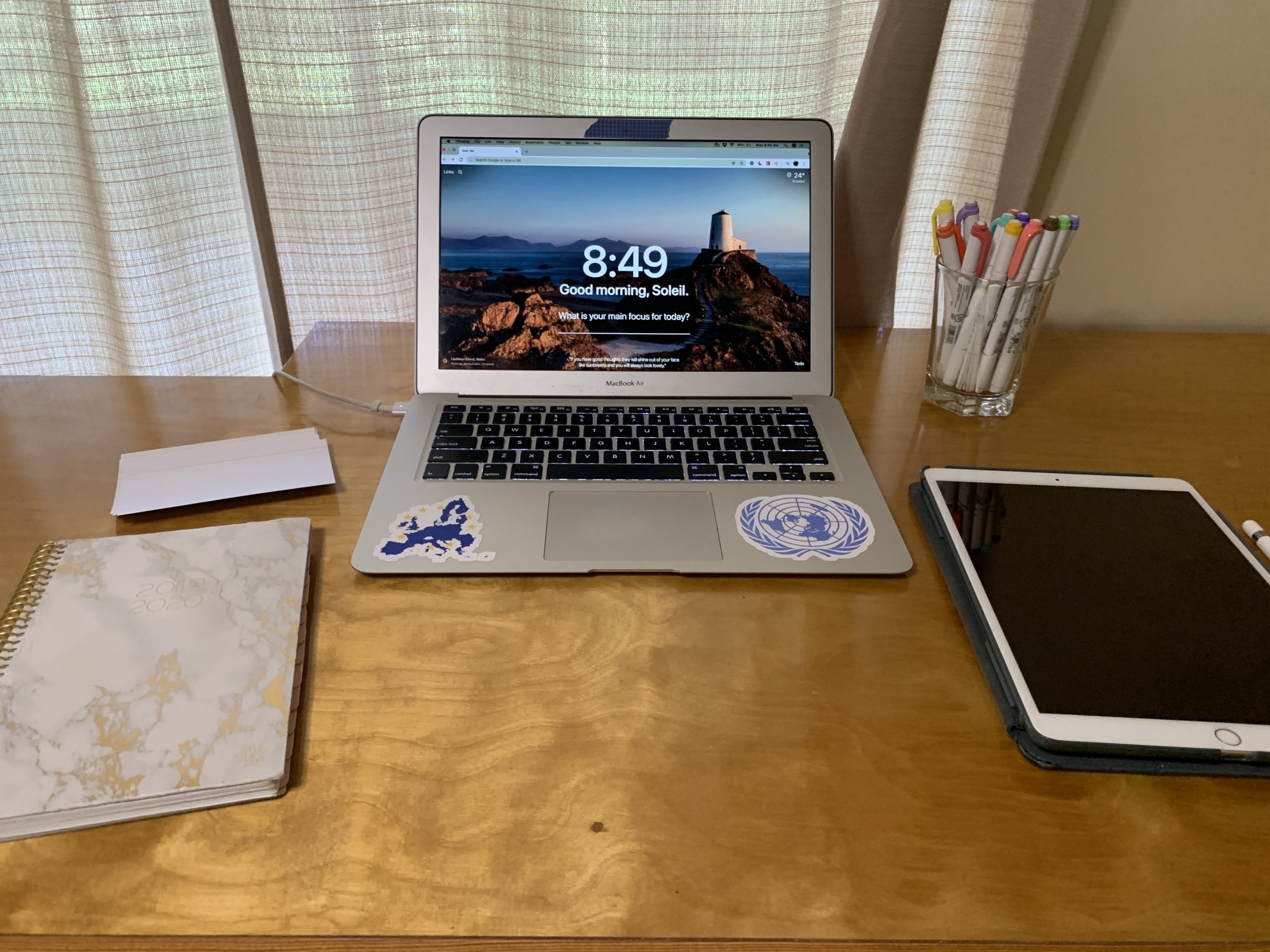Productive desk setup. Soleil de Zwart // AS Review
By PJ Heusted
The first day of school often gives students an excuse to put together their best outfits, make promises of productivity and see the smiling faces of their classmates. With Western’s shift to remote-learning for spring quarter, the start of the quarter asks students to participate in a form of learning that is likely new and uncomfortable.
Working from home takes students out of the structure of a traditional classroom and learning schedule and asks them to take the instruction into their own hands. While student reactions to this change are largely negative, the online spring quarter isn’t going away and students will need to adapt in order to get through the next 10 weeks.
Unlike a classroom, library or coffee shop, working from home presents a number of distractions and opportunities for procrastination that aren’t present in these other environments. It’s much easier to binge Netflix’s “Tiger King” than to motivate oneself to listen to a video lecture or take notes on a powerpoint.
How can students best prepare for success this quarter? The AS Review has a few tips for you:
Make a schedule for yourself
Many professors shifted to asynchronous instruction as opposed to holding live Zoom video classes during originally scheduled class times. This shift accommodates the schedule changes that students faced as a result of the COVID-19 pandemic. However, it also takes away from the structure that a daily or weekly class schedule provides.
Sit down and plan out at least a rough schedule. Block out periods of time to sit down and do classwork and homework, then stick to it. Having a work schedule, even if it’s unofficial, can help trick the brain into feeling like there is more structure to the day than social distancing typically provides.
Create a “work space”
The separation between work life and “normal” life often takes form in keeping work isolated to campus, the library or another beloved study spot. Being unable to go to these places inevitably blurs the line between work and life.
Try to set aside a place that is designated for work. As comfortable and cozy as the bed may be, it is less than ideal as a consistent work place. Desks, kitchen tables, counters, etc. all work well for setting up a work space.
Work remotely with friends
Some people work best when they are alone, but for others that sounds like a nightmare. Just because students can’t go to the library and study in a group does not mean that there aren’t ways to work with friends.
Try video chatting with friends who live in other places, whether that be down the hall, down the street or miles away. Set up Zoom calls with classmates to tackle the group work that would typically be done in class. While video chats are nothing compared to being able to work face-to-face, there is something to be said about still being able to crack a joke during a study session and hear a friend laugh.
Get off social media
Professors ban phones in the classroom for a reason: they are a distraction. Turn off the phone, put it in another room, give it to a roommate, etc. but put it away and don’t fall victim to the seductive buzz of a Twitter notification. It sounds so simple, but it will boost productivity.
If being away from a cell phone for an extended period of time isn’t an option, consider setting it to “do not disturb” or lock the apps that may cause distractions. There are also a variety of productivity apps that perform these functions in creative ways. Consider “Forest,” which sets a timer and doesn’t allow you to leave the app while a little pixelated tree grows as a reward for not scrolling or browsing the internet.
Get dressed
There is nothing quite like staying in comfy, cozy pajamas all day instead of changing into work attire. It’s one of life’s simplest pleasures. However, think of the activities that are usually done in pajamas: watching TV, sleeping, relaxing, etc.. These aren’t activities that promote productivity, are they?
Put on some “real” clothes. They don’t have to be anything fancy or special, but even just jeans, a t-shirt and a pair of shoes can trick the brain into thinking that it’s time to do some work. Don’t wear things that are uncomfortable, but get dressed as if it’s time for class or work.
Know your resources
Now that students, faculty and staff can no longer access school technology, many are left without access to the software necessary to do their work. Software programs such as the Adobe Creative Cloud, Microsoft Office and Statistical Product and Service Solutions [SPSS] software can cost up to nearly a hundred dollars a year which is out of many students’ budgets.
However, ATUS offers tutorials on how to access and download these programs for free. Additionally, many academic departments, Associated Students offices and other campus-based resource groups offer remote advising, tech support and more. Just because campus is closed doesn’t mean that there is no longer any support.
This quarter will present students, faculty, staff and individuals around the world with challenges that we have not faced before. It is an incredibly uncertain time, especially as a young person trying to learn how to navigate the world. Being socially isolated isn’t fun and isn’t something that any of us want to be doing. But we are all in this together and there has never been a better time to organize, work together and understand that we are not alone.

